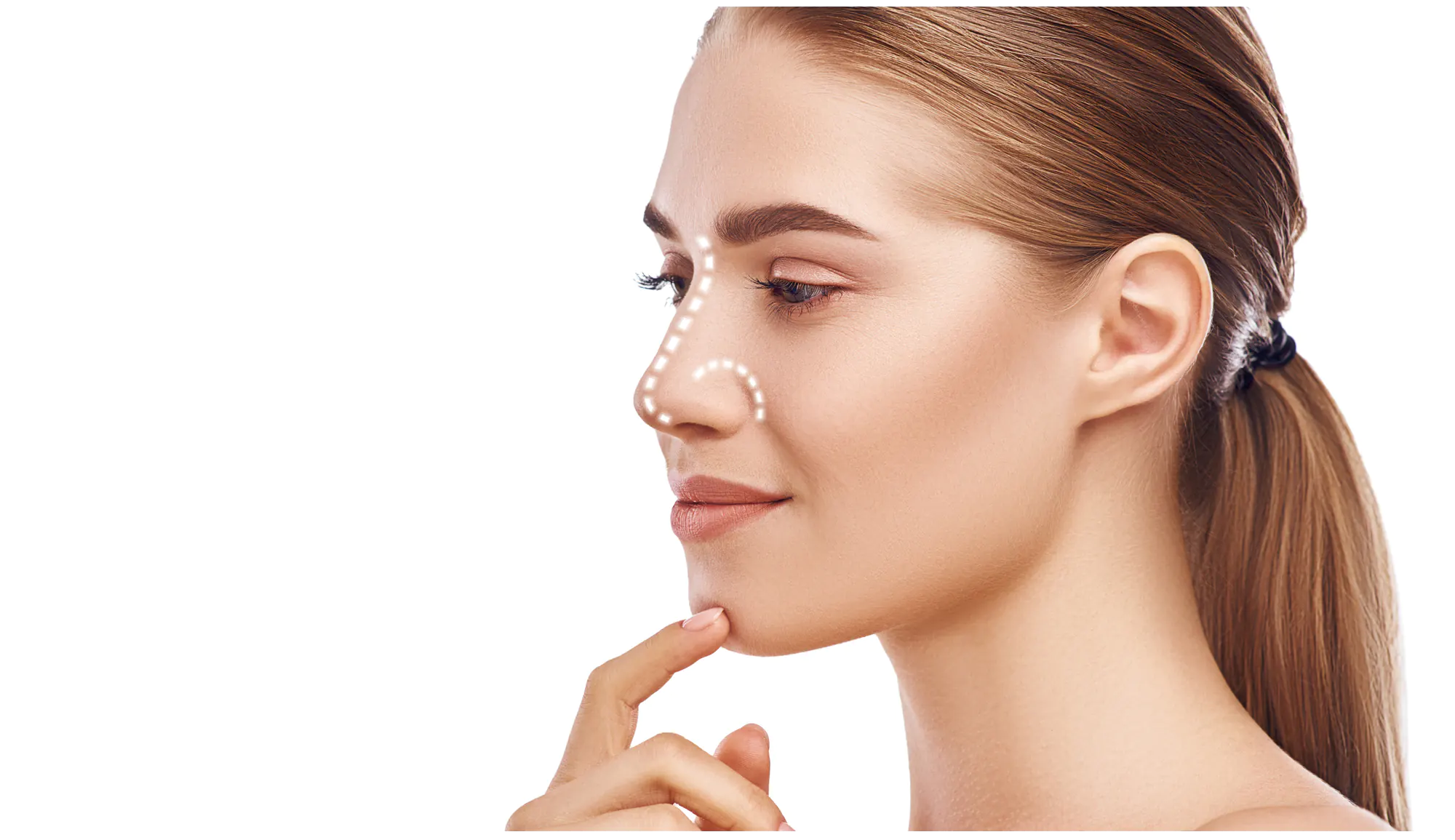A proud nose makes a daintier face –
The making of a three-dimensional face
Having a nose that stands proud not only makes a daintier face, but also exemplifies your overall facial stature! As Asians typically carry a flatter nose, the nose rhinoplasty surgery has become the most popular plastic surgery procedure in Asia. How should you choose the right rhinoplasty surgery for yourself?
Nose rhinoplasty surgeries can be categorized as either surgical or non-surgical, whether to improve congenital nose shapes, or to straighten a nose bridge or a nose tip.

Non-Surgical Nose Surgery
Non-surgical rhinoplasty surgeries use injections to reshape the nose, commonly utilizing filler materials such as hyaluronic acid, Calcium Hydroxyapatite, etc.
Hyaluronic acid can be found within the human body itself, as such carries little risk of rejection. The advantage of using Hyaluronic acid is that the procedure is simple and quick, taking about 20 minutes to complete. However, as it can only mildly reshape the nose, it is not suitable for everyone – large deformities would require surgical repair.
The effectiveness of Hyaluronic acid is impermanent, lasting between 6~9 months; repeated injections are required to maintain the effects. Repeatedly injecting Hyaluronic acid at the same site will, however, risk skin trauma or vascular necrosis due to disturbances to blood circulation. It is normal for the injection site to appear red, bruised or even inflamed.
Microcrystalline is a synthetic biological soft-ceramic plasticizer. Its main component calcium hydroxyapatite is commonly found in human skeletal structure, able to maintain its shape for up to a year. Similarly, the procedure only takes about 20 minutes to complete. It is normal for the injection site to slightly swell and ache, as well as at rare occasions whiten and itch temporarily.
Surgical Nose Surgery: Implantation of Artificial Nasal Cartilage
For those with severe nasal deformities, oversized noses or functional issues (i.e. nasal congestions), rhinoplasty surgeries would be deemed suitable. The implants used are either autologous grafts, derived from the patient’s own bodily structure (nasal septum cartilage, ear cartilage, ribs, etc.), or synthetic (solid silicon, synthetic polymers, etc.). A synthetic implant surgery takes about 30 minutes, whereas an autologous graft implant surgery takes about 2~3 hours.
The advantage of an autologous transplantation is that it minimizes rejection and inflammation, compared to its counterpart. Although the effects are permanent, it can be undone via reconstruction surgeries.
As all surgeries carry risks, as well as owing to potential prosthesis rejections, surgical errors, congenitally skewed nasal structures, or poor post-operative care, serious sequelae can arise, such as prosthesis displacement, wound infection, nasal clip contracture, or even exposure of the prosthesis.
Many failed surgeries can be attributed to improper assessments pre-surgery, forgoing considering whether the desired shape fits the patient’s face in pursue for a dream. It is therefore crucial to consult a specialist for risk assessments, and to choose only a qualified doctor or institution.

